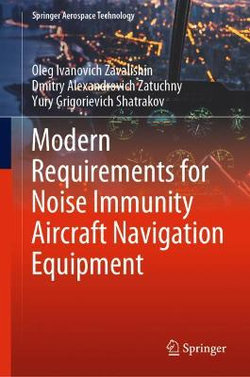Introduction
1. Method of landing aircraft using integrated satellite optical navigation system
1.1. Comparative analysis of existing instrumental landing systems, corresponding to current requirements of ICAO, and the rationale for the transition to landing an aircraft according to a satellite radio navigation system. Methods for compensating pseudorange measurement errors in a satellite radio navigation system
1.2. Development of recommendations for the use of an integrated navigation system at the approach for landing stage for various operating conditions
1.3. Methods to improve the noise immunity of the integrated navigation system in the area of the aerodrome and with an accurate approach for landing based on the optimal placement of ground equipment and three-dimensional visualization of the terrain on board of the aircraft
2. Evaluation and assurance of reliability of the navigation systems of civil aviation aircraft under the influence of various interferences
2.1. Calculation method confirming the performance and reliability of the GBAS station
2.2. The method of reducing the impact of failures of tracking of the positioning of the aircraft, arising as a result of fast maneuvering, when flying in mountainous areas and at low altitudes by optimizing the tracking system by speed
3. Methods to improve the noise immunity of the navigation system at the stage of terminal procedures and precision landing approach
3.1 Improvement of the continuity characteristics of the integrated navigation system in the area of the aerodrome and during precise landing approach based on the use of two-constellation ground-based GNSS functional aids (multi-constellation GBAS)
3.2 Improvement of the noise immunity of the integrated navigation system in the area of the aerodrome and during precise landing approach based on the use of two-constellation ground-based GNSS functional additions (multi-constellation GBAS)
3.2.1 Algorithms to ensure the noise immunity of the integrated navigation system in the area of the aerodrome by protection levels
3.2.2 Improvement of noise immunity of the integrated navigation system in the area of the aerodrome and during precise landing approach by detecting external influences on the GNSS signal
3.2.3 Detection of abnormal state of the ionosphere (ionospheric storm)3.3 Experimental confirmation of improved navigation and landing accuracy when using ground-based local augmentation GBAS (LKKS-A-2000) of I-III category of ICAO
3.4 Metrological support of flight reviews of LKKS (GBAS)
3.5 The concept of creation and the method of implementation of the set of technical solutions of the satellite navigation and landing system (LKKS-A-2000) and the Federal GNSS Monitoring Center, which meet the modern requirements of ICAO. Results of the implementation of the proposed technical solutions
4. Improvement of noise immunity of the navigation systems of civil aircraft based on satellite and inertial navigation systems, as well as ground-based systems
4.1. Algorithm for detecting "false satellites" based on the integration of satellite and inertial navigation systems
4.2. Improvement of the noise immunity of aircraft navigation systems in subpolar latitudes based on the use of aircraft positioning devices




Share This Book: